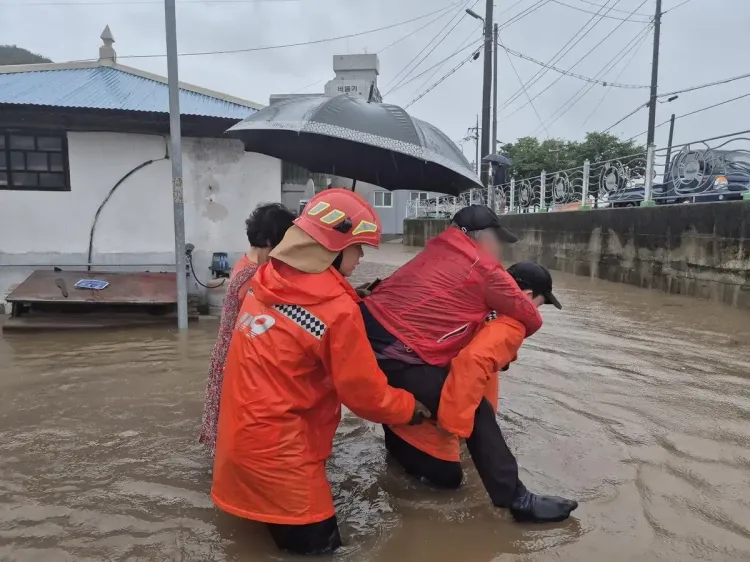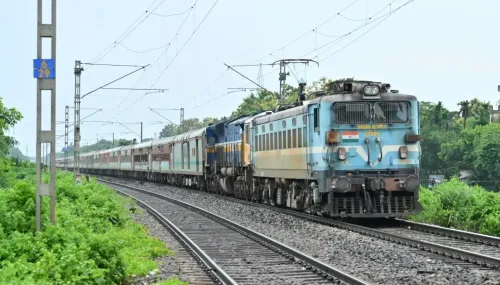How have torrential rains impacted South Korea?

Synopsis
Key Takeaways
- Two fatalities reported due to collapsed structures and flooded vehicles.
- 1,000 residents evacuated from affected areas.
- Seosan experienced record rainfall with 344 mm recorded.
- Warnings issued for potential further downpours until Saturday.
- Emergency alerts sent nationwide for public safety.
Seoul, July 17 (NationPress) Two individuals have lost their lives and approximately 1,000 residents were forced to evacuate as intense rainfall battered parts of the central regions of the country, officials reported on Thursday, cautioning that additional downpours are anticipated in the upcoming days.
With the rain front shifting northward, disaster management officials upgraded the alert level for the Chungcheong provinces and the southern section of Gyeonggi Province to the second-highest status.
On Wednesday, a retaining wall in the city of Osan, located 52 kilometers south of Seoul, collapsed onto a moving vehicle, resulting in the driver’s death.
In Seosan, South Chungcheong Province, emergency responders found a man in cardiac arrest inside a submerged vehicle around 3:59 a.m. Thursday. He was rushed to a nearby medical facility but unfortunately did not survive.
Additionally, two minor injuries, including cases of hypothermia, were reported in Seosan and Buyeo.
Since Wednesday evening, Seosan, the region most severely affected, has seen up to 344 mm of rain, according to meteorological authorities.
Remarkably, Seosan recorded 114.9 mm of rain in a single hour between 1:46 a.m. and 2:46 a.m., marking the highest hourly rainfall for July since records began in 1968.
The heavy rains also triggered a landslide in Cheongyang, South Chungcheong Province, where two residents were temporarily trapped but successfully rescued.
Fire officials reported that both individuals were taken to a local hospital with leg injuries, but their conditions were not life-threatening.
In the city of Cheongju, North Chungcheong Province, the rainfall reached 67.4 mm per hour, the second-highest recorded.
As of 7 a.m. Thursday, 26 emergency text alerts for heavy rainfall were distributed nationwide via mobile devices, with 25 alerts specifically targeting the Chungcheong area.
The Korean Meteorological Administration (KMA) issues such alerts when hourly rainfall exceeds 50 mm and three-hour cumulative rainfall surpasses 90 mm, or when one-hour rainfall alone exceeds 72 mm, as reported by Yonhap news agency.
Further rain is expected to persist across the nation until Saturday.
In the greater Seoul area and Chungcheong Province, rainfalls of 50 to 150 mm are anticipated, while North Jeolla Province may receive 30 to 100 mm. Gwangju and South Jeolla Provinces are forecasted for 20 to 80 mm until Friday.
The southern regions are also predicted to endure heavy rainfall starting Friday, with areas like Ulsan and Busan expecting between 100 to 200 mm of rain.









